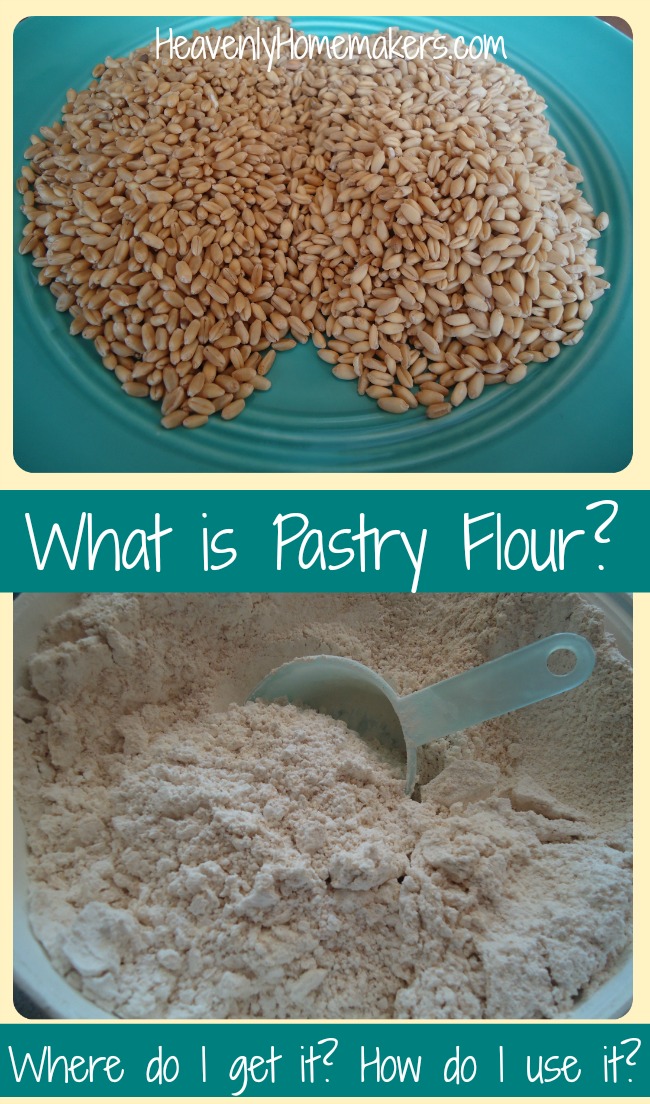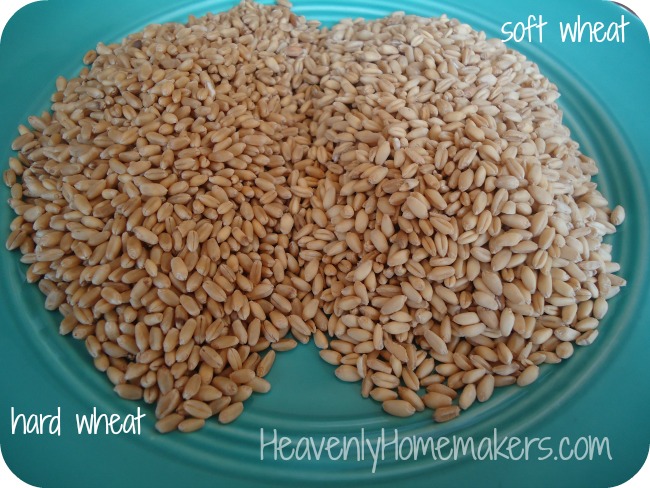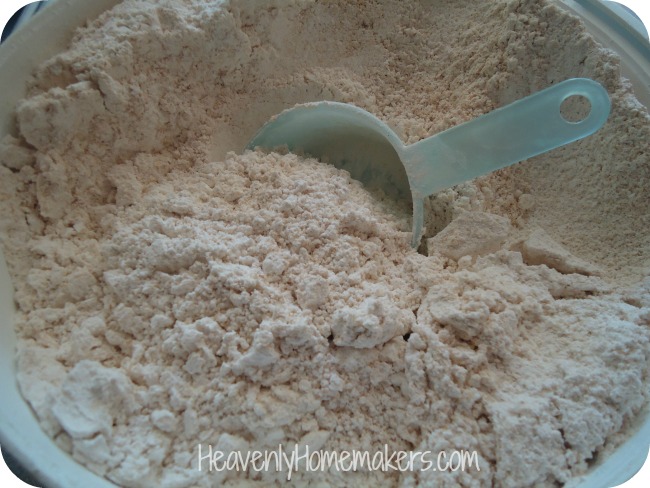There’s this stuff called “whole wheat pastry flour” I keep talking about in my Low Sugar Treat baked goods. What in the world??
Never fear. I shall explain. You need to know this so that you can make this Low Sugar Super Moist Chocolate Cake. And probably for other reasons too.

What is Pastry Flour?
First let me explain a little bit about different varieties of wheat so you can understand what makes pastry flour. There are other grains worth mentioning, but to keep things simple (I like simple), let’s just stick to what is most commonly used and what I like best. (Not that it’s all about me and my preferences, but I am the one writing this so…)
Hard Red Wheat
This is most commonly used in store-bought breads. It has a high protein content and a heavier texture and flavor. When you purchase “Whole Wheat Flour” at the store, you are most likely getting flour ground from red wheat. This is all good, however, it is my least favorite flour to bake with and eat. My experience is that breads turn out too heavy and dense when made with red wheat.
Hard White Wheat
I prefer the hard white variety of grain over red wheat a million times over. It is slightly lower in protein, but still offers all the goodness and nutrition of whole grain with a lighter taste and texture. Don’t let the word “white” throw you off here. It’s not white flour – it is a white wheat grain used which makes a delicious whole wheat flour. I use this almost exclusively in my kitchen. Or at least I did…
Soft White Wheat
This is my new love. Soft wheat has a low protein content, making it light and fluffy and absolutely wonderful to work with. It is this soft wheat that becomes Whole Wheat Pastry Flour when ground. Aha! Now we know what pastry flour is.
Take a look at the following picture, although it’s a little bit tough to see the difference in the grains of wheat. On the right are “soft wheat berries” and on the left are “hard wheat berries.”

The soft wheat berries are a bit more rounded whereas the hard wheat berries are more flat and pokey. (I excel in the use of adjectives.)
How to Use Whole Wheat Pastry Flour
This is very important! While soft wheat produces a pastry flour that looks and acts like all-purpose flour in many ways, we cannot use soft wheat in any recipes that include yeast because it does not contain enough gluten. Ground soft wheat (pastry flour) can only be used in non-yeast recipes like muffins, quick breads, pancakes, waffles, cakes, and cookies.
But let me tell you what I’m learning! Grinding soft wheat into whole wheat pastry flour for use in non-yeast goodies is fantastic! Hard wheat can be used in any recipe – yeast or no. But soft wheat (pastry flour) helps cakes and muffins bake up softer and lighter.
Lookie. Here’s my freshly ground whole wheat pastry flour.
Doesn’t it make you want to bake a cake?
(Scroll through these recipes for low sugar cake recipes.)

Where Can You Get Whole Wheat Pastry Flour?
Well, you can buy some Soft White Wheat Berries and grind your own if you have a grain mill. (I have a Nutrimill.)
Or, you can purchase ready-made whole wheat pastry flour from Amazon, or through a health food co-op like Azure Standard or another one you are a part of. And while I haven’t looked and don’t have one close-by, I would imagine that stores like Whole Foods and Natural Grocers carries it.
So Let’s Review
Hard wheat makes regular whole wheat flour which can be used in ANY whole wheat flour recipe.
Soft wheat makes whole wheat pastry flour which can only be used in non-yeast recipes like muffins, quick breads, pancakes, waffles, cakes, and cookies.
You can keep it simple and use regular whole wheat flour for all of your baking needs. Or you can use pastry flour for your non-yeast baking for a lighter, fluffier baked good, then use regular whole wheat flour for yeast breads.
For more information about flour, grain, and varieties of wheat, you may want to look through all of my posts on Grains and Grain Mills.
What is your favorite flour to use in baking? Do you use a variety or stick to one kind?

Is there any chance you can use a mix of hard and soft wheat flour to make a lighter texture bread?
I’ve never done it before but just looked it up. Sounds like as long as 2/3 of the flour you’re using is hard wheat, the other 1/3 can be soft wheat and it will still make a nice bread!
You can also use a mixture of both hard and soft wheat flours in quick breads, muffins, pancakes, etc. with excellent results. I keep a gallon ziploc freezer bag of each in my freezer so I don’t have to grind every time I bake (which is pretty much daily). If I’m low on one flour or the other I combine them for whatever I’m making (although I do stick with just hard wheat for my yeast breads). Just make sure you bring the flour to room temperature if you’re making anything with yeast or it won’t rise. You can use the cold flour for most of the non-yeasted breads, although if it’s a very moist batter (like my banana bread recipe that contains sour cream), you may end up with a ditch in the middle of your bread! ;-)
I combine them almost all the time. I grind 1 cup hard red wheat and 2 cups soft white wheat berries and have excellent results. My kids enjoy eating biscuits for breakfast. I got tired of buying them from the tubes in the store. I now make Laura’s Amazing Soft Pretzels recipe and use the 1 to 2 cup ratio I mentioned. I let my bread maker make the dough to make life easier. I cut the recipe in half and it will make about 13 or 14 3 1/2inch biscuits. They are almost always turn out light and as good or better then Grands Pillsbury tube biscuits. I recently also added in some oatmeal with the berries when I grinded them and the flour was even lighter.
Funny story, this weekend I was at the grocery store and purchased “whole wheat flour” even though many of the whole wheat recipes I use call for white whole wheat. I decided I probably needed to research the difference. My baked goods are good, but they never quiet turn out the way I want. I now know it’t probably best to spend a few extra dollars to buy the white whole wheat….. Except now I have two bags of whole wheat that I need to use first. :).
Just starting to make the change. I bought a mill a year ago used it couple of times and then life happen and now I making the time for it. Just need to find a place to order berries from.
I have been grinding my flour for several years. I really like the taste of the hard red. I do use more hard white. However, I have been grinding more spelt lately than I use too. I love to mix hard red, hard white, and spelt in pancakes. Also have used it in cookies.
Three years ago I bought my first grain mill (Wondermill). Being my first experience with grinding my own wheat, I started with buying 3 big bags of hard red. I then learned about hard white. I have been buying the Prairy Gold Hard White Wheat at WalMart ever since. I especiallylove it mixed half and half with fresh ground popcorn in my corn muffins. If anyone has a good recipe to use up my hard red I would sure appreciate it! The hard red is too heavy texture and flavor by itself in anything I’ve tried . Any ideas?
I’d say mix in some hard white with the red to use it up. :)
I’ve made waffles with standard “whole wheat” flour (hard red) and hardly noticed the difference. It also works OK in pizza dough. Anything else I’ve tried, it ends up too dense and “wheat”-y tasting.
I have been mixing hard white and soft white equally and using it sort of as an all purpose flour. Works great on your tortillas!! Love having it in my freezer!
I’ve been milling and using pastry berries for years and use it for all the things you’ve mentioned. One tip I was given that I will pass on is to mill your pastry berries first followed by milling the hard white berries. The harder wheat helps to clean out the mill from the soft wheat that tends to stick to the insides. :)
I use soft white berries for my bread, I just add a bit of gluten in with the flour and my bread rises beautifully!
Well, hooray! Finally! Someone else who doesn’t really like hard red. I knew we were soul-sisters. :-)
Also, I hardly ever grind soft wheat. I don’t know why. I have it. I just always grab the hard white for everything.
I used to always grab hard white for everything too just to keep it simple. But then I discovered how YUM soft white is. It’s almost like using white all purpose flour. Not that I miss using white all purpose flour. But still.
I too used to used white whole wheat for everything. Then a year ago I switched to spelt in muffins to lower our gluten intake. However, I recently bought some whole wheat pastry flour for a recipe and have been experimenting with the leftovers. The pastry flour made amazing crepes and has worked well in pancakes and waffles, though my sweet potato biscuits didn’t rise as high. Next on my list to try is buckwheat. My only issue is how to store it all? I have so many grains/flours in my fridge, I rarely have enough room for all our produce.
Also is whole wheat/grain flour supposed to be stored in the fridge or freezer? I have read online sites that say freeze flour to prevent spoilage and other sites that say freezing destroys healthy enzymes. I buy mostly Bob’s Red Mill or Trader Joe’s flour as I have yet to make the leap to a grain mill.
Do you use the spelt in homemade bread, just substitute the spelt for the whole wheat? I guess what I am asking is can you use spelt in recipes that call for yeast? Would love to try spelt. I have only used the hard white wheat flour (freshly ground from the berries).
On the Bob’s Red Mill Stone Ground Spelt Flour bag it states that the flour “can be used in most recipies calling for wheat flour – especially yeast and quick breads”. I have a recipe for honey spelt bread (yeasted) off a Vita Spelt Flour bag, but I haven’t got around to trying it. So far I’ve only used spelt flour in muffins.
After a quick google search, it sounds like spelt can be used in yeast breads, but it is a bit finicky, especially when using 100% whole spelt flour. Sounds best to read up on it, before you attempt it.
I took a class from the Bread Beckers when I first got my grain mill, and they recommended using 2 parts hard red to 1 part hard white for yeast breads. You get the nutty taste without the heaviness. I’ve always used that 2:1 ratio, and I get a lot of compliments on my bread.
I absolutely love this idea of using soft white wheat to make pastry flour. Could you guide me as to where to purchase the berries and what brand you prefer. I also have a nutrimill and love it for grinding the berries! Any help would be ever so appreciated! Thank you!
I really like Wheat Montana, or I buy from my food co-op, Azure Standard. :)
Can I grind the soft white wheat berries in my Nutribullet? I just don’t have room for more kitchen appliances.
I would imagine so but can’t say for sure because I’ve not seen a Nutribullet. I wonder if you can experiment with it with a small amount of grain to test it out.:)
Thank you for the information.
I soak the soft white wheat berries, draining after about 8 hrs, then rinsing & draining one or two more times for a total of approximately 24 hrs, until they are just barely beginning to sprout. (Too much sprout is hard on the mill.) Then they go into the dehydrator for a few hours until completely dry. Transfer to a covered container, kept in the fridge, and ready to grind for cookies, muffins, sweet breads, etc.
This is called Bulgur Flour, or Sprouted Soft White Wheat Flour. ?